How to Choose Binoculars
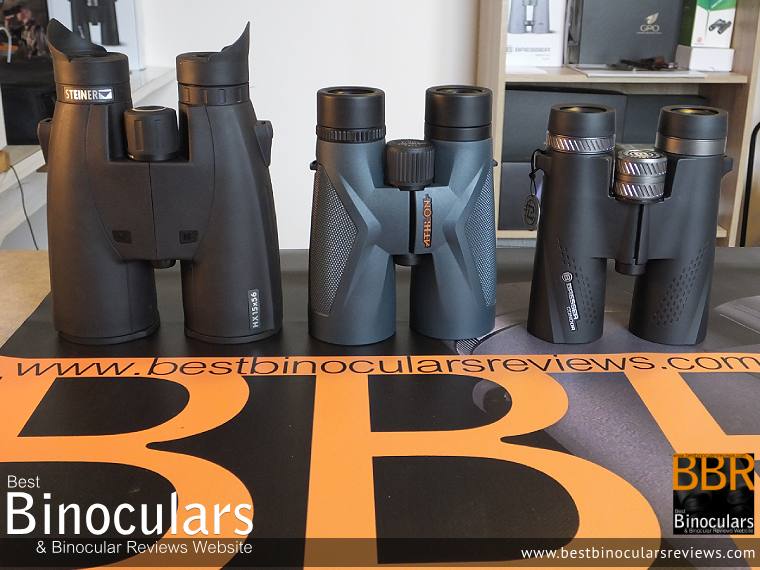
Separating Real Features from Marketing Hype
With such a huge amount and variety of brands, sizes, and prices it can get more than a little overwhelming when trying to make a shortlist, nevermind actually choose your binoculars and this is made even the more difficult with all the marketing jargon and the fact that each manufacturer will highlight what they think their products best features are (often using deliberately confusing or ambiguous terms) and try and keep you from discovering their worst!
In this guide, I will show you How to Choose Binoculars, by cutting through the jargon and making sure you pick the one that has the important features and components, whilst avoiding the ones that are merely marketing gobbledegook!
Please note that I have already written a very detailed guide on what to look for in good binoculars which focuses more on the important technical aspects to know when choosing binoculars and so I highly recommend that you take some time to go through it as well as this one to be sure that you choose the right binoculars for your needs.
In this article, I will be focusing on the basic, but important features to look out for on a binocular, the ones to avoid and how to separate essential information from marketing gibberish.
So once you have made certain that your instrument has all these core features, then you can drill down further.
Important Features
No matter if you are wanting your binoculars for bird watching, wildlife observation, traveling, sailing, hunting, astronomy or just about any other use you can think of, there are certain important features and components that really work and all good binoculars need or should have in order for them to perform at their best and which depending on which price range you choose, you need to look out for and make sure your final choice has:
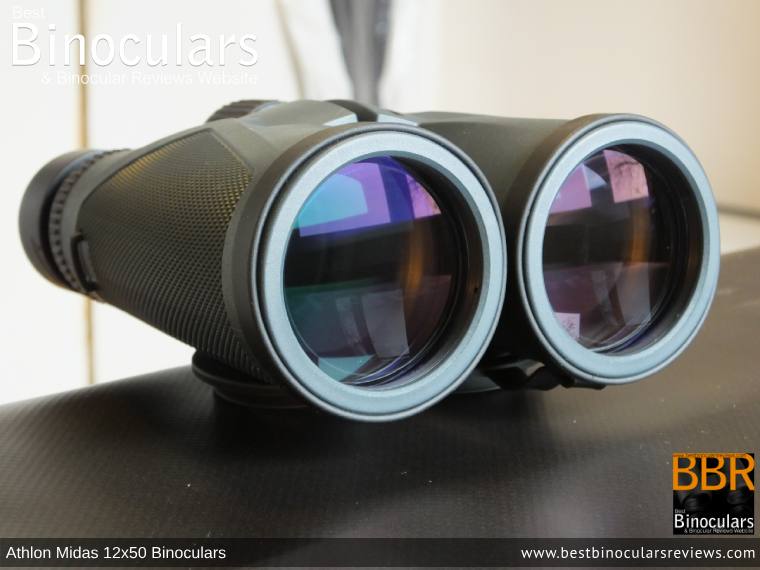
Anti-Reflection Coatings
Applied to some or all of the lens surfaces throughout the binocular, anti-reflection (AR) coatings are extremely important as they can and do make a noticeable difference to both the quality and brightness of the final image.
However, not all AR coatings are created equal and on top of this, different instruments will have different levels of AR coatings applied to some or all of their lenses.
As it is often a brand’s secret sauce and a closely guarded secret, the exact materials they use is never completely divulged, so here we generally cannot know for certain as to whether a particular brand’s “Super Special®” AR lens coatings are superior to another’s brands “Mega Magic™” AR coatings.
What name or catchphrase they use to describe their coatings is usually marketing gobbledygook, but what is important is to take note of is how much and how many of the lenses in the binocular have been treated and here the exact wording is very important:
What you need to look out for and what is ideal is binocular that is described as being Fully Multi-Coated. This indicates that all lens surfaces throughout the whole system have multiple layers of an AR coating applied to them and unless you are knowingly buying a very cheap pair (please don’t), all good binoculars will be fully multi-coated.
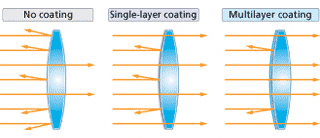
Far less effective are instruments that are only Multi-Coated (only some lenses are multi-coated), Fully Coated (all lenses are coated but with only a single layer) or even just Coated (only some lenses are coated and with only a single layer).
If you are buying a cheap/low-cost pair and there is no mention of the level of coatings, assume that they are NOT fully multi-coated otherwise they would highlight the fact.
For more information, take a look at my guide to Anti-Reflection Lens Coatings on Binoculars
Fog & Water Protection
Before going into what you need to look for, I’ll start this section on stating that whilst it may not seem obvious why, especially if you never go out in the rain, knowing if the binoculars are fully sealed and thus both fog and waterproof is a really an important aspect in how to choose a pair of binoculars for a number of reasons:
Firstly it is a definite and very strong indicator of quality. These days there are very few unsealed and thus unprotected instruments that are worth looking at as the rest of the components and the build quality will most certainly be very poor.
Waterproofing is Not only for the Rain
Next, to make a binocular waterproof, it has to be completely sealed and impervious to water (usually rated to a certain depth). But remember that as well as being impervious to water, these o-ring seals will also prevent dust from getting inside the system in dry conditions and when you store your binocular which is also very important.
Also Fogproof
When choosing your binoculars make sure that is it is also fogproof. Firstly this makes sure the waterproofing claim is true as the seals need to be completely airtight as well as watertight.
This is because, in order to protect the lenses from fogging, the air inside the binocular is replaced with a completely moistureless gas (usually nitrogen or argon) which is what prevents the internal glass surfaces from misting or fogging up, which can happen very easily to unprotected devices.
Exact Wording is Important
Be aware that some binoculars will be described as being “Weather Protected” or “Weather-Resistant“. This is not good enough as it means that the seals are not airtight and thus they a most certainly not fog proof.
Choose binoculars that are advertised as being both fog AND waterproof. There are a bunch of other advantages to this, which you explore here: All About Fogproof and Waterproof Binoculars
Prism Glass
Look for the words BaK-4 and avoid BK-7 glass. There are other types of glass used to make the prisms in binoculars, but these are the most common.
Whilst it is true that not all BaK-4 glass is made equal and there are some applications where the cheaper BK-7 glass is preferred to BaK-4, this is almost never the case on binoculars and ones that use BK-7 are almost certainly going to be inferior to a similarly priced instrument with BaK-4 glass. More: BaK-4 & BK7 Prisms.
If you don’t know what the prisms do, take a look at my guide to How Binoculars Work.
Roof Prism Coatings
Not necessary on a Porro prism instrument, but If you are choosing a roof prism binocular, they MUST have mirror coatings on the prism and unless your budget is very low, you really should ensure that they are also phase corrected.
Note: If you are not sure of the difference between roof and Porro prism binoculars, take a look at my guide to the Different Types of Binoculars.
Here there are different levels and which you should look out for will depend on your budget:
The best roof prism binoculars have dielectric coated prisms, whilst at the mid and even low-cost price levels, you should be looking out for silver mirror coatings.
These days I would try to avoid aluminum coated roof prism binoculars as you can find cheap roof prism binoculars with silver coatings if you know where to look: Best Binoculars Under $100 (£/€)
Complete Marketing Hype & Gobbledygook!
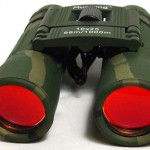
Gold or Ruby Lens Coatings
Many very cheap binoculars will have red tinted objective lenses, which the manufacturer will highlight with terms like “special ruby coated lenses”.
In most cases and the best scenario is that they are just window dressing and do nothing at all, however, in some cases they filter or emphasize a specific color of the spectrum to compensate for the poor performance of their sub-standard optics. More info: Ruby Coated Binoculars
Exceptions to the Rule:
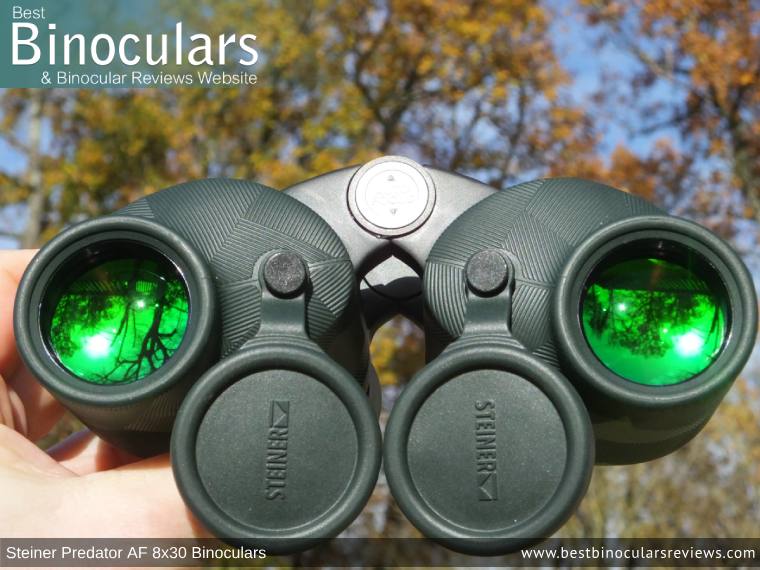
Steiner Predator Binoculars
There are however a few exceptions. For example, Steiner Optics has an excellent of range of instruments specifically designed for hunting where the lenses have been tinted so that they filter out greens and emphasize red, orange and brown colors in the view so that many species of wildlife stand out from the environment and are thus easier to spot.
Before trying them out I was highly skeptical and although I am not a hunter, I did take a pair with me on safari and I can say that whilst the effect is subtle, it really does work: For more take a look at my Steiner Predator AF 8x30 Binoculars Review.
Steiner AutoBright™ Lens Coatings
Another exception and another series from Steiner are their compact
BluHorizons Binoculars that have photosensitive coatings on the lenses that are colored blue. Like some types of eyeglasses, they react to how bright it is and thus can either let in more light or reduce the amount to reduce glare in very bright light. More: Steiner BluHorizons 10x26 Binoculars Review.
Day & Night Binoculars
No matter what the manufacturer’s description and title say on Amazon, eBay or AliExpress, there is no such thing as a cheap day and night vision binocular, especially a compact one that will work anything like you hope it will. Period! Do Not Go there and do NOT choose something like these Night Hero Binoculars:
If you want night vision, choose and then buy a real night vision binocular or monocular.
If you want a daytime binocular that can also work well in low and very light, you need to get a good quality pair with large objective lenses.
If you want to look at the moon, stars and planets at night, choose a binocular for Astronomy.
Zoom Binoculars
There are only a very few exceptions to this and only then are they useful in a small number of applications. But in general, avoid binoculars that have variable magnification, especially those that are cheap. Usually described as zoom binoculars, they are terrible and will most likely make a very bad choice.
More: Guide to Zoom Binoculars.
Binoculars With A Camera
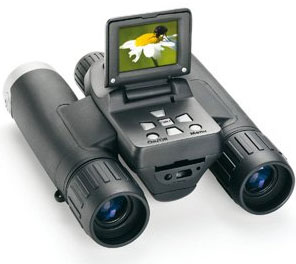
As with the zooms, above there are a few exceptions to this, but they are expensive and very specialized, so in almost all other cases, digital camera binoculars are to be avoided.
More: Binoculars with Digital Camera: a Scam?

 Article | Posted by Best Binocular Reviews
Article | Posted by Best Binocular Reviews 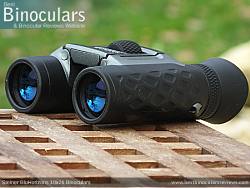

 Categories:
Categories:  Tags:
Tags: 
